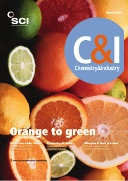A new test that can detect advanced-stage Ebola infection within minutes is to be launched in March 2015.
The standard test for Ebola is RT-PCR (reverse transcriptase polymerase chain reaction), which is based on genome amplification techniques. This detects bits of the RNA of the virus itself. According to Public Health England (PHE), it takes about 4 hours to get initial results. Faster and more portable tests, which don’t rely on lab-based equipment, would greatly help with infection control and early treatment.
The new test is based on a technique called the lateral flow principle. It detects the Ebola virus antigen VP40 in human serum and throat swabs. Antigens in the sample will react with particles in the test strip coated with anti-Ebola antibodies. The mixture migrates upwards on the membrane by capillary action. Two coloured lines indicate a positive result.
Biotech firm Senova based in Weimar, Germany, has validated the reliability of the test using hundreds of real samples in Guinea in West Africa. The test is being marketed by STADApharm, a German supplier of generic drugs, non-prescription treatments and diagnostic kits.
Infected people can be detected and isolated within a very short space of time, says Lothar Guske, STADApharm managing director. ‘This speeds up and simplifies the quarantine management in the disaster areas.’
The main use for the test is probably going to be diagnosing the disease in people who have died, explains the owner of the privately held Senova, Hans Hermann Söffing. ‘The viral load in people who have died of Ebola is so high that even a mere throat swab is sufficient to perform the rapid test. Isolation can thus be carried out extremely quickly in the event of a positive test result. This is particularly important as experience shows that, in the main infection areas, many people become infected through contact with the deceased.’
Meanwhile, there have been previous efforts to speed Ebola diagnosis. The Wellcome Trust announced in November 2014 trials in Guinea of a new 15-minute Ebola test that it had co-funded with the UK government. The reagents used in the test are available as dried pellets, and can be used and transported at room temperature.
The two tests use different technologies, says Emma Aarons, a consultant virologist at the Rare and Imported Pathogens Laboratory, PHE Porton. Whereas the Senova device detects antigens, the Wellcome Trust test detects viral RNA. ‘For a lateral flow device [like the Senova one], a test result in minutes would be the norm. The quicker the Ebola test result, the quicker appropriate action can be taken.’
Although the RT-PCR test takes hours, however, says Ben Neumann a microbiologist at the University of Reading, it can detect Ebola when symptoms first start to show. ‘They can detect the virus when 200 viruses are present in a drop of a blood, but this new test is less sensitive and can only detect viruses when they number above about 100,000 – which is in the advanced stages of the disease.’
Neumann agrees the Senova test has potential for use to check for infected dead bodies. ‘It is quick and cheap and portable, which means it should be good in helping clean up the virus.’
Jonathan Ball, a virologist at the University of Nottingham, UK, says lateral flow assays are good in some circumstances, and not in others, such as early detection. ‘I am guessing sensitivity is an issue as is often the case with assays that detect antigen; they rarely if ever match the degree of sensitivity that genome amplification techniques manage.’
Meanwhile, the first batch of GlaxoSmithKline’s Ebola vaccine arrived in Liberia in February 2014. The shipment, which contained an initial 300 vials of the vaccine, was the first to arrive in one of the main Ebola-affected countries. It will be used to start the first large-scale efficacy trial of experimental Ebola vaccines.
The vaccine is currently being tested in five small Phase 1 clinical trials in the UK, US, Switzerland and Mali, involving around 200 healthy volunteers in total. Initial Phase 1 studies were published in November 2014 and the remaining Phase 1 results will be published in coming months.
The selected dose will now be tested in a large Phase 3 clinical trial led by the US National Institutes of Health (NIH), which is expected to involve up to 30,000 people, one third of whom will receive GSK’s candidate vaccine. This trial will begin shortly in Liberia, subject to regulatory approval, with further shipments of vaccines to follow.





